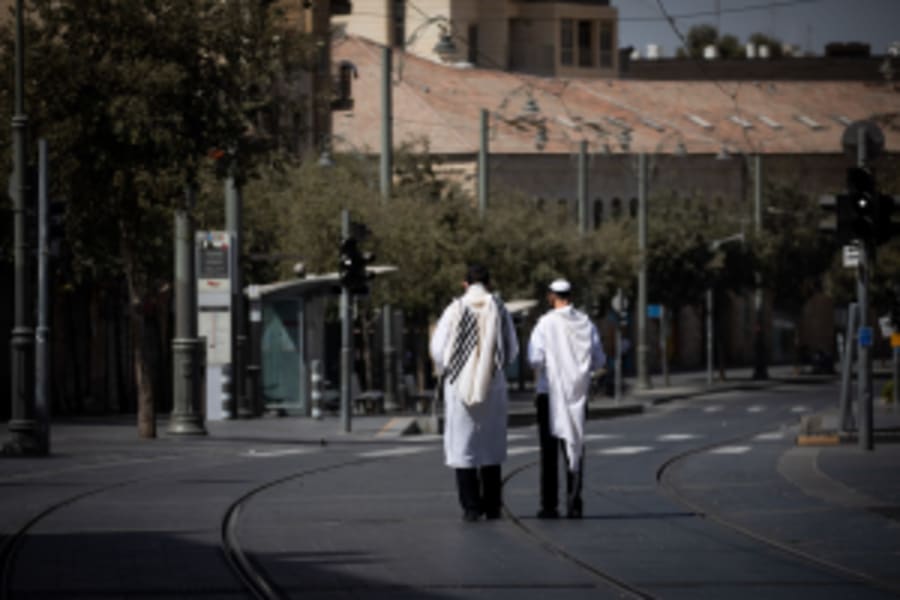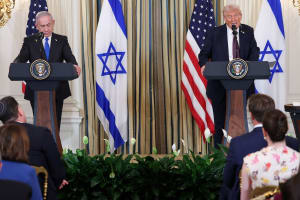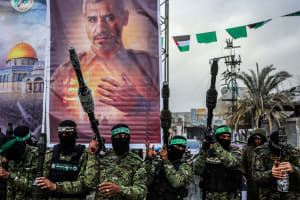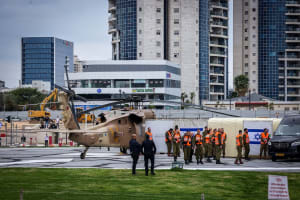As Israel continues to weigh Gaza strategy, IDF brass said to advocate ceasefire deal or slow attrition
IDF Chief Zamir reportedly opposes complete takeover of Gaza Strip

Tensions between the political leadership and the Israel Defense Forces top brass are rising, local media reported on Monday, as Israel is deliberating the future strategy of the Gaza War in light of the apparent failure of ceasefire negotiations and the military’s ongoing “Gideon’s Chariots” operation.
Army Radio reported that IDF Chief of Staff Eyal Zamir is leading one camp within the military’s high command that demands “strategic clarity” from the political leaders, while advocating a relatively quick end to the war – even if that requires renewed negotiations with Hamas.
“We can be flexible, and we must make an effort to reach a deal,” the report summarized his positions, adding that IDF sources signaled that the military would be willing to accept even painful concessions, including extensive withdrawals from areas that were captured in hard-fought operations.
The IDF argues that control over some key strategic areas along the Gaza border must be maintained. Still, military officials added, “even if we are required to compromise – we can afford to be flexible.”
Zamir has been warning about the erosion of the army’s strength and morale, particularly among reserve soldiers, arguing that the continued IDF presence in Gaza under these circumstances would play into the terrorists’ hands.
For multiple reasons, Prime Minister Benjamin Netanyahu has not convened his Security Cabinet for several days, delaying a decision over Israel’s next strategic move regarding Gaza.
If it becomes clear that no deal can be reached with Hamas, the IDF is expected to present the cabinet with two alternative courses of action.
The first would be a full conquest of the Gaza Strip, as advocated by the Cabinet’s far-right members.
According to Army Radio, the IDF brass opposes this as it estimates that while the conquest is militarily feasible within several more months, clearing the whole territory would take several more years.
The IDF, therefore, will recommend encircling the remaining Hamas strongholds from strategic positions while aiming at attrition.
“Otherwise, the military believes, instead of the IDF wearing down Hamas, Hamas will end up wearing down the IDF through ongoing guerrilla warfare,” according to the report.
Meanwhile, other reports suggest that divisions over how to proceed in Gaza – between those favoring a prolonged war that could stretch on for years and those pushing for quicker resolutions – exist not only within the military but also within the Cabinet itself.
Parts of the IDF brass, led by Staff Chief Zamir, want to wrap up the intense fighting in Gaza, as Operation Gideon’s Chariots has been winding down without creating conditions to free the hostages or defeat Hamas.
However, some field commanders told Ynet News that they are proud of their work while cautioning that much is left to be done in the Gaza Strip.
Large parts of Hamas’ underground infrastructure remain intact and are still being used to fight Israeli soldiers, who are destroying ever larger areas of the strip as part of the fighting.
Lt.-Col. H., commander of the Givati Brigade reconnaissance unit, told Ynet that only the extensive flattening of buildings disrupts Hamas’ underground capabilities.
He described a recent incident where his troops captured three Hamas terrorists who eventually surrendered: “To reach them inside the wreckage, we had to break through routes with our Namer APCs and tanks. We surrounded them from all sides, pushed more debris toward them to pressure them, and finally approached with a Namer and called for their surrender.”
“Fighting guerrilla forces takes patience and perseverance,” Lt.-Col. H. explained.
“Because the enemy uses the civilian population for military advantage, operations must be gradual. The Nahal Brigade, which operated here last year, struck tunnels that would otherwise be used to supply fighters now. Hamas no longer has those fortifications, and it’s harder for them in Beit Hanoun… Thanks to their work, we had a more effective campaign because the major tunnel networks here were already destroyed.”
“Professionally, I can tell anyone questioning the length of this war: the right way to fight Hamas is to stay in the field. Only that way will we win. It creates operational opportunities and blocks Hamas from recovering,” the commander said.
“If we keep pulling back and repeating raids, we won’t be able to hold our gains. I tell my soldiers that in 50 years, they’ll sit on their porches with their grandchildren and be proud they took part in the longest war in the country’s history – that they didn’t give up and didn’t stop. This is the war of perseverance, and my three children at home know exactly what I’m doing here, and why I’ve spent a whole month inside Beit Hanoun.”

The All Israel News Staff is a team of journalists in Israel.
You might also like to read this:
















